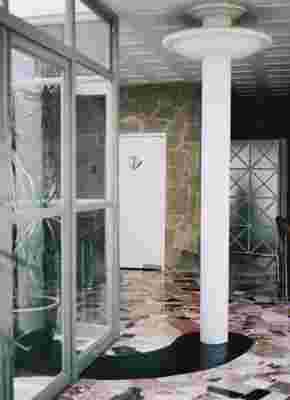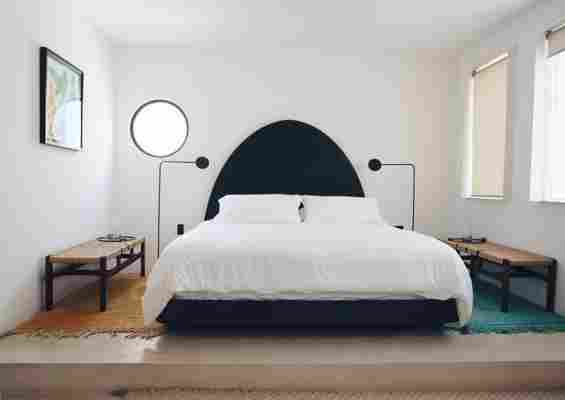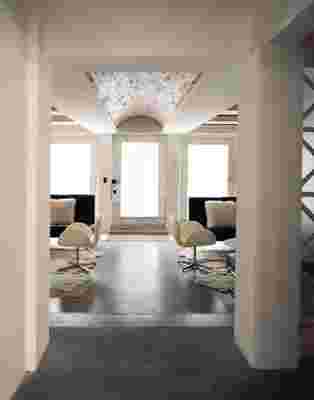July 26,2022
This Renovated Mexican Guest House Blends Modernist Sensibility With Old World Charm
by David Stewart
Despite the turmoil wrought by COVID-19, Mexico City has maintained its elevated stature as a global hotspot for art and design. The joint is still jumping, and for anyone traveling to or working in the city, the list of new hospitality destinations continues to grow. Consider Casa Pani , an alluring guest house recently opened in Cuauhtémoc, one of the oldest neighborhoods in the bustling metropolis. Originally a private single-family house designed by pioneering modernist architect Mario Pani in 1962, the boutique property has been restored and expanded to offer six generous guest accommodations, reception rooms, rooftop terraces, a pool, and courtyard patios.
Casa Pani is the brainchild of three partners: architect Miggi Hood, mezcal magnate Yola Jimenez, and entrepreneur Marie Cazalaa. “We purchased the house from the son of the original homeowners. He was drawn to the idea that we wanted to preserve the essence of the place as a piece of Mexican design history,” says Hood, the primary designer on the project, who worked with architect Luciana de la Garza of Mexico City’s Estudio Atemporal to execute the renovation plans.

The house’s original stone floors were preserved.
Mario Pani, the older brother of furniture and interior designer Arturo Pani, studied architecture in Paris and Mexico. A progenitor of the International Style in Latin America, he is responsible for such landmarks of Mexican modernism as the National Conservatory of Music of Mexico, the Secretariat of Urban Development and Housing, and numerous apartment blocks rooted in Corbusian ideals of multifamily housing. Although he is better known for large-scale institutional and residential projects, the private residence that is now Casa Pani contains all the hallmarks of the architect’s practice.

A guest room includes a custom bed designed by Miggi Hood and Ingemar Hagen-Keith, and fabricated by local artisans.
“Many of the original architectural details, like the chunky stone floors, porthole windows, and the curving staircase, are still intact. The new structure and the interiors throughout all take their cues from the spirit of Pani’s work,” Hood explains. That new structure, appropriately called the New House, is separated from the main residence by two patios and a covered walkway. The two guest rooms in the addition are accessed by a new spiral metal stair, partially exposed to the outdoors, that nods to the sinuous lines of Pani’s original stair of stone and plaster.

View of the Casa Pani lobby and its vaulted ceiling.
The interiors feature a stylish but unpretentious mix of vintage pieces—including signature pieces by the likes of Vladimir Kagan, Paolo Buffa, and Michael van Beuren—Moroccan rugs, and beds and other custom furnishings designed by Hood and Ingemar Hagen-Keith. In the Rock Star Suite, the bedroom and sitting area are separated by sliding doors of carved mahogany and glass designed by designer Eugenio Escudero, a Spanish Civil War refugee who founded his namesake furniture factory in Mexico City in the 1940s.
In the Rock Star Suite, floor-to-ceiling sliding panels of mahogany and glass separate the bedroom and living room. Seating by Paolo Buffa.
The two guest suites in the New House, which feature exposed concrete ceilings and polished concrete floors, have a more pared-down, loftlike feeling, akin to an artist’s studio. “Mexico City is so visually stimulating, so visceral,” Hood notes. “Sometimes you just want a big white room and a lovely bath.”






